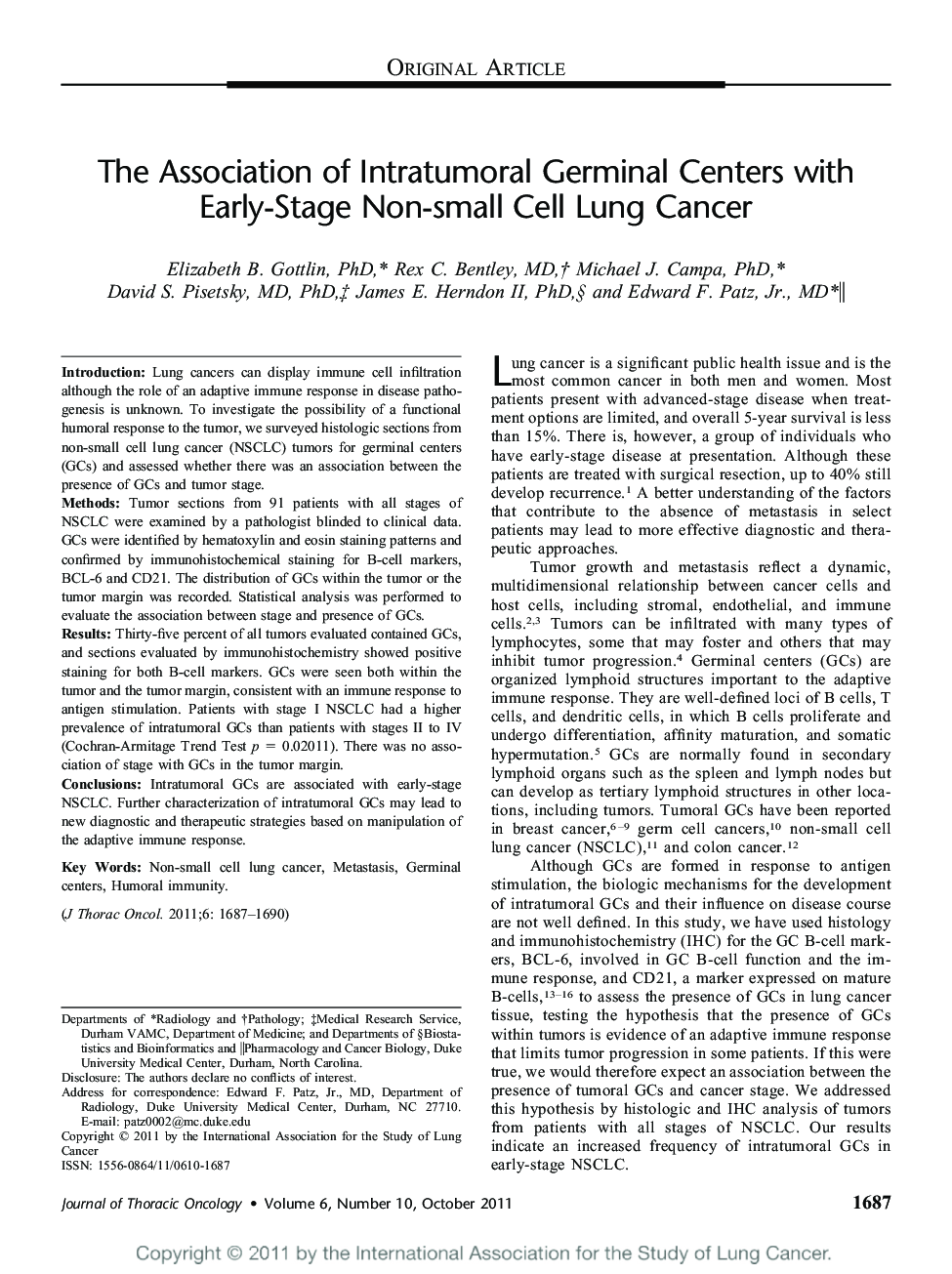| Article ID | Journal | Published Year | Pages | File Type |
|---|---|---|---|---|
| 3991079 | Journal of Thoracic Oncology | 2011 | 4 Pages |
IntroductionLung cancers can display immune cell infiltration although the role of an adaptive immune response in disease pathogenesis is unknown. To investigate the possibility of a functional humoral response to the tumor, we surveyed histologic sections from non-small cell lung cancer (NSCLC) tumors for germinal centers (GCs) and assessed whether there was an association between the presence of GCs and tumor stage.MethodsTumor sections from 91 patients with all stages of NSCLC were examined by a pathologist blinded to clinical data. GCs were identified by hematoxylin and eosin staining patterns and confirmed by immunohistochemical staining for B-cell markers, BCL-6 and CD21. The distribution of GCs within the tumor or the tumor margin was recorded. Statistical analysis was performed to evaluate the association between stage and presence of GCs.ResultsThirty-five percent of all tumors evaluated contained GCs, and sections evaluated by immunohistochemistry showed positive staining for both B-cell markers. GCs were seen both within the tumor and the tumor margin, consistent with an immune response to antigen stimulation. Patients with stage I NSCLC had a higher prevalence of intratumoral GCs than patients with stages II to IV (Cochran-Armitage Trend Test p = 0.02011). There was no association of stage with GCs in the tumor margin.ConclusionsIntratumoral GCs are associated with early-stage NSCLC. Further characterization of intratumoral GCs may lead to new diagnostic and therapeutic strategies based on manipulation of the adaptive immune response.
